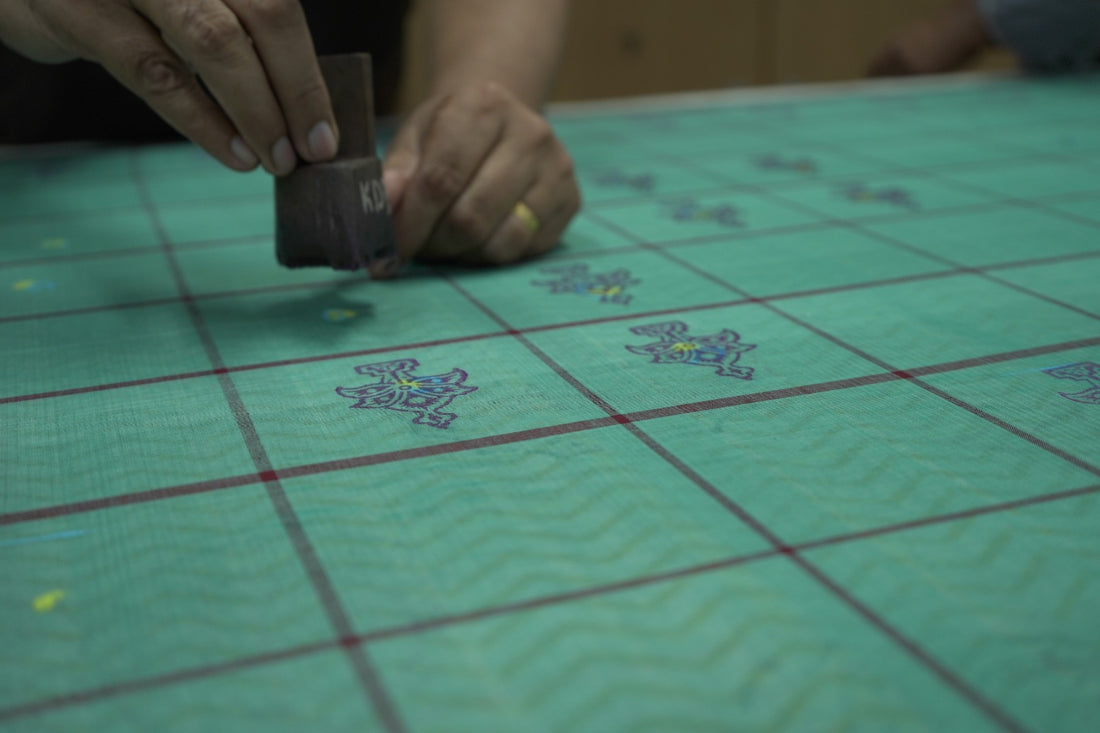Block printing, one of the oldest types of printing, has a profound history and a significant place in the cultural heritage of India. This beautiful, ancient textile art is known for its unique designs and a robust colour palette, created through simple yet sophisticated techniques.
What is Block Printing?
Block printing is the process of printing designs on fabric by using wooden blocks. The practice is popular in East and Southeast Asia, and in India, it has been in existence for over 2000 years. It involves carving a desired pattern or design onto a block, which is then dipped in colour paste solution and printed onto the fabric.

Different Styles in Block Printing:
India, with its rich diversity, has nurtured various styles of block printing. Here are some popular styles:
1. Direct Style:
Direct style of printing involves the direct application of print to the fabric using carved blocks. The design on the block is meticulously carved by artisans, and the carved block is then dipped into the colour paste solution and directly printed onto the fabric.
2. Resist Style:
In resist style of block printing, the design is transferred onto the fabric using a 'resist' paste (usually made from clay or resin and water) instead of a dye. The fabric is then dyed, and the areas covered by the resist paste remain uncolored, resulting in a beautiful pattern. Once the dye is dried, the resist paste is removed, revealing the original color of the fabric underneath. This technique is popular in Rajasthan and Gujarat, with renowned styles like Dabu and Ajrakh print.
3. Discharge Style:
In discharge style of block printing, the fabric is dyed first, and then a chemical is applied to the fabric in desired patterns using blocks. The chemical reacts with the dye and removes the color in the patterned areas, creating a design. This technique is commonly used in Machilipatnam and Kalahasti.
Popular Block Printing methods in India:
India's cultural diversity is mirrored in its various methods of block printing. Here are a few:
1. Bagru:
Originating from the Bagru village in Rajasthan, Bagru block printing is known for its natural dyes and eco-friendly process. Geometric shapes and floral designs are common, usually in earthy tones.
2. Sanganeri:
Sanganeri block printing, from Sanganer in Jaipur, is known for its intricate floral patterns, often depicting scenes from local folklore, on a white or light-colored background.
3. Kalamkari:
Kalamkari is an exquisite form of block printing practiced in Andhra Pradesh, renowned for its hand-painted and block-printed motifs, often featuring mythological events, flora, and fauna.
4. Ajrakh:
Originating from Gujarat and also practiced in Rajasthan, Ajrakh printing is a complex form of block printing involving multiple steps of printing and resist-dyeing, resulting in intricately designed, symmetrical patterns in rich colors.
5. Dabu:
Dabu printing, also from Rajasthan, employs a resist technique using a mud mixture that, when dried, is resist-dyed. The technique yields intricate designs often filled with motifs of flora and fauna.
The Cultural Significance:
Block printing is more than just a textile art; it is a chronicle of cultural heritage passed down through generations. Each region, each style, each motif carries a unique story, a fragment of history, and an artistic tradition. It’s a source of livelihood for many artisans and represents the sustainable fashion practices deeply embedded in Indian culture.
The Future of Block Printing:
With rising interest in sustainable and artisanal fashion worldwide, block printing has witnessed a resurgence. Innovative designs, blending of traditional and modern motifs, and experimentation with colors have added a contemporary flair to the traditional art.
While keeping the tradition alive, it’s crucial to uplift the artisan communities responsible for carrying this heritage forward. With fair-trade practices, design innovations, and global exposure, Indian block printing can continue to thrive, reflecting the beautiful interplay of history, culture, and art.
In conclusion, block printing in India is a rich and diverse art form, integral to the country’s cultural tapestry. Each block print carries the soulful touch of an artisan, a cultural narrative, and the vibrancy of India.

